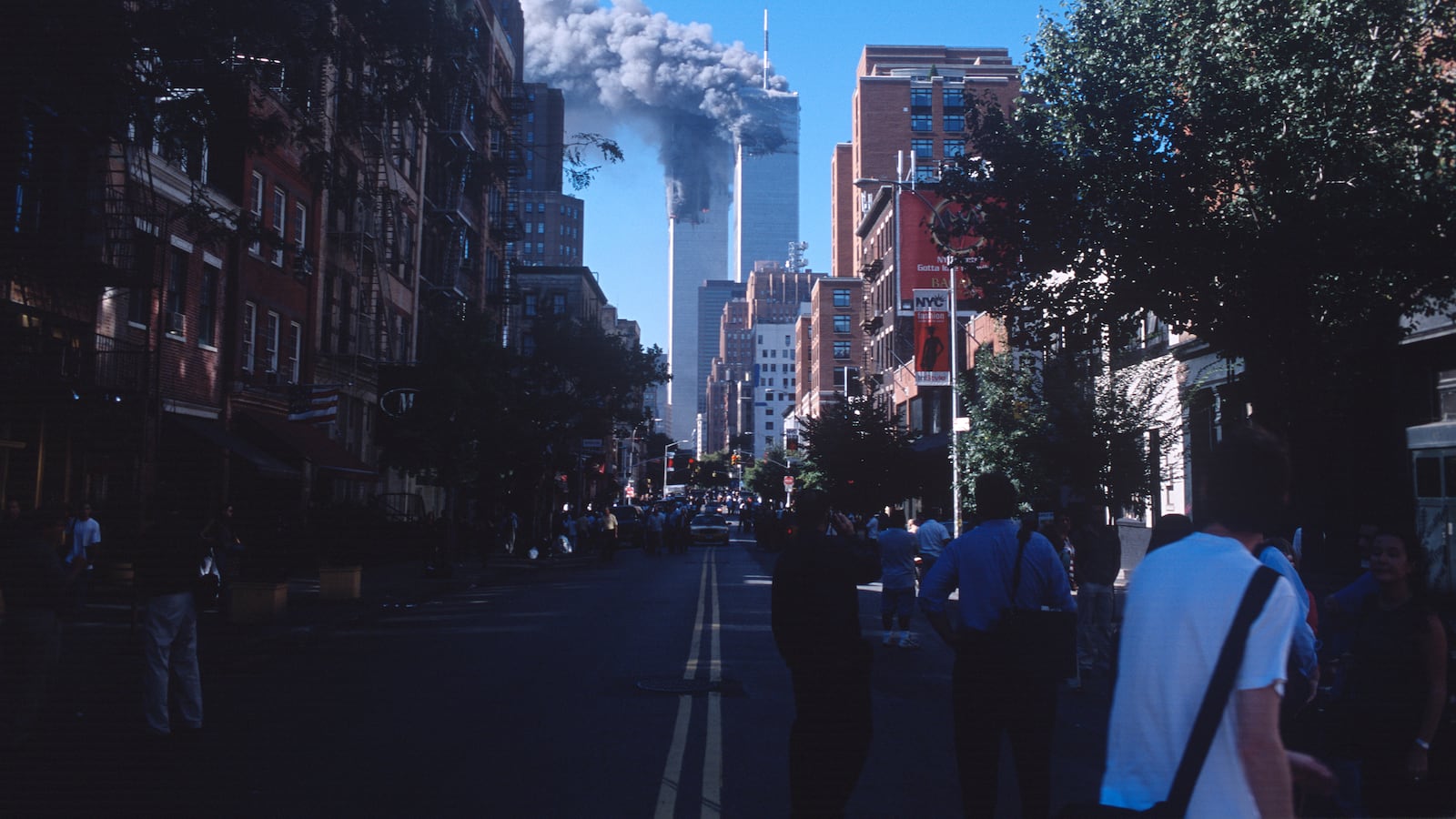Sign up for Chalkbeat’s free weekly newsletter to keep up with how education is changing across the U.S.
It was the beginning of the school day at the beginning of the school year at the beginning of the millennium. Millions of American children were in classrooms on the morning of September 11, 2001, when hijackers flew planes into the World Trade Center and the Pentagon. Then-President George W. Bush was in the classroom, too — reading with young Florida students until his chief of staff whispered in his ear: “America is under attack.”
Across the country that morning, there were hushed conversations among teachers and attempts to explain to students what was happening — or shield them from it. Students remember pained looks on their teachers’ faces. Some said it was the reaction of the adults around them, rather than the images of burning buildings and pulverized steel, that conveyed the life-changing nature of the attacks.
News back then moved slowly by today’s standards. The world was still largely without smartphones or social media. Teachers and students watched the news on boxy TVs strapped to rolling carts that moved between classrooms. Across the country that day, lesson plans were futile. Then, one by one, students were called out of class as parents arrived early to bring them home.
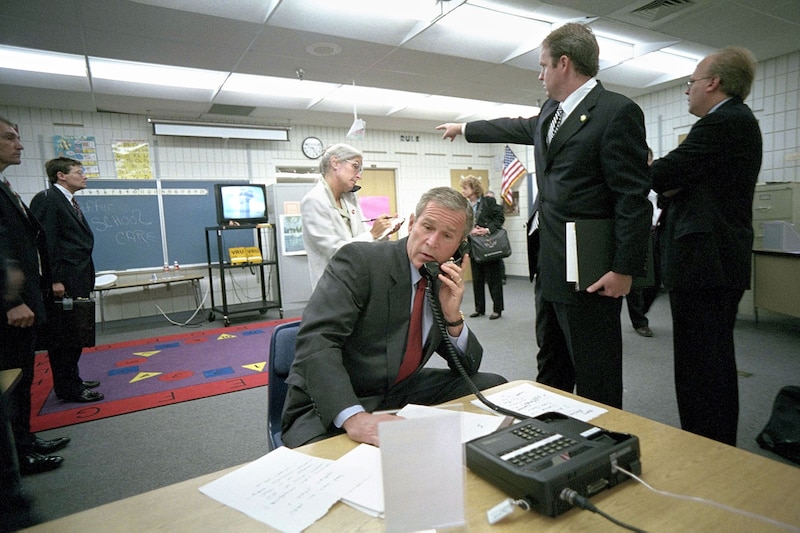
In New York City, things were even more dramatic — the day’s horrific events were playing out nearby. At P.S. 1, in Lower Manhattan, one teacher remembers another lowering the shades so kindergartners wouldn’t see the burning towers out the window. At P.S. 124, a few blocks away, another teacher watched as crowds covered in ash walked toward Brooklyn. New York City educators did their best to provide students a steady hand even as some feared for loved ones who worked in the towers, or struggled to get through to friends and family on jammed phone lines. There were harrowing evacuations, long walks home, and eerily silent subway rides.
As for the aftermath of 9/11, some teachers and students recalled with nostalgia how Americans came together, and they wondered if such shows of unity would be possible today. Others saw the attacks as having the opposite effect, citing the rise in Islamophobia, and long, costly, and polarizing wars that are only now ending.
With the 20th anniversary of 9/11 approaching, Chalkbeat asked those in school on that day to share what they remember and what they think K-12 students growing up today should know about the generation-defining terror attacks.
These are their words, edited for length and clarity.
Paula McDonel was teaching a World Geography class at Collierville High School in Collierville, Tennessee, when a colleague, looking somber, entered her classroom.
She asked me where my husband, a FedEx pilot, was that morning. I said he was home. Only then did she tell me that a commercial plane had struck the World Trade Center. I asked my students if anyone had a parent that was flying on a plane that morning. Our community had many pilots and others who may have been flying. No one in my class did. We had finished our lesson, so I turned on CNN, thinking this would be part of the current events we covered in class that week. We didn’t understand how radically our day was changing.
McDonel is retired and lives in Rosharon, Texas.
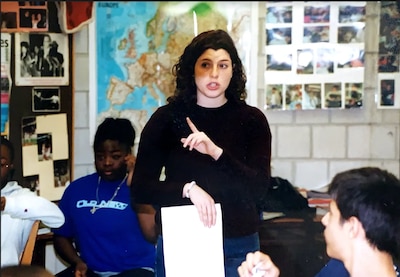
Debbie Castellani, then a student-teacher at Cambridge Rindge and Latin high school in Cambridge, Massachusetts, was teaching a World History class alongside her mentor teacher.
Suddenly, another teacher burst into the room and yelled: “Oh my goodness, the World Trade Center was just bombed!” The students started to chatter, and we tried to calm them, frustrated that this teacher thought it appropriate to share this publicly in front of the students, but also concerned about this news.
Between periods, my mentor teacher and I were able to slip into a workroom where a science teacher had a television. This was all pre-smartphone. The news featured the first World Trade tower with smoke billowing from the side, and the newscasters were sharing that a plane had crashed into the building. Then, suddenly, we saw the second plane flying into the south tower.
Castellani is now a high school history teacher in Highland Park, Illinois.
Yvette Ho taught kindergarten at P.S. 1 Alfred Smith School in Lower Manhattan. On the morning of 9/11, she remembers hearing a crash, followed by sirens.
I was a new teacher at the school and was so unaware of the events that were taking place just blocks away. I kept teaching. I even brought the class to their scheduled art class. When we arrived at the art room, the class of older children was buzzing with a nervous energy, and the teacher had a look of shock on her face as she lowered the window shades. The fifth-floor room had a direct view of the towers, and the students were witnessing people jumping out of windows.
Ho is an early childhood administrator in New York City.
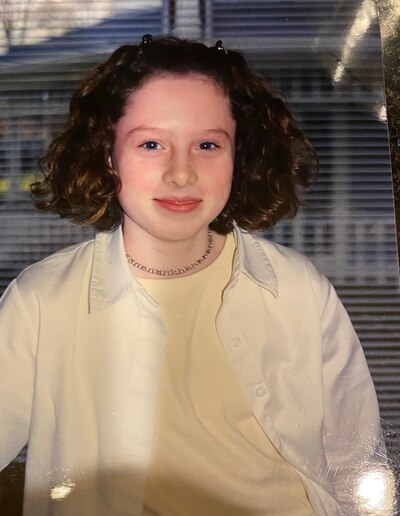
Katie Lootens, a seventh grader at Northview Middle School in Indianapolis, was on the school bus just before 9 a.m. Eastern that day.
The last girl to get on told us something “bad” had happened but didn’t know exactly what. When we got to school, half of the students were worried about the attacks, and the other half were worried about a rumor that a kid had brought a gun on the bus. Once we got to homeroom, my teacher had the news on, and we just watched.
The second plane hit during first period, French. Most kids didn’t fully understand what was going on or the gravity of the situation, but we were worried because we had never seen our teachers this worried. Later in the day, my English language arts teacher had us journal our feelings and then share. By social studies that afternoon, I remember my teacher pulling out the map and showing us where Afghanistan was. I remember my math teacher trying to teach us math, but nobody was paying attention, and eventually, he gave up and put the news back on. In band and PE, we had the option to participate in the normal day if we wanted some normalcy, or we could sit out if we wanted.
Lootens now teaches English learners in Washington, D.C.
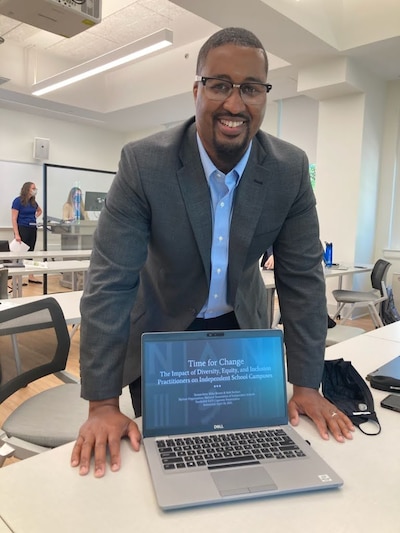
Mike Brown, a sixth grade teacher at Berkeley Middle School in Williamsburg, Virginia, was reviewing the day’s agenda with the students in his homeroom when he heard a commotion outside his classroom.
Middle school teachers very quickly are able to decipher kids running in the hallway. This was not that. I heard an “oh my God,” at which point I walked quickly to look out into the hallway. One of my teacher teammates was approaching the room as I was opening the door. She had a startled look on her face and asked if I was watching TV. When I turned it on, we were immediately heartbroken for the people that were on the plane as well as those in the building that was just hit. But we still thought it was a tragic accident. That only lasted for a minute as the news camera focused on the burning building caught a glimpse of a second plane hitting the second tower. Immediately we knew our country was under attack, and we were sitting in the middle of a military town. A number of my students’ parents were living in the neighborhood solely because they were enlisted in the military.
Brown is the director of new school development at New Schools for Alabama. He lives in Memphis.
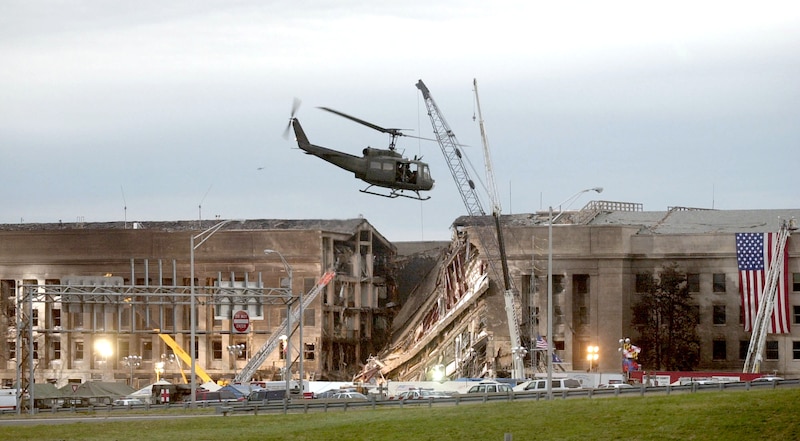
Eric Nordstrom was a student at Battle Mountain High School in Edwards, Colorado. When the news first broke, Nordstrom’s English teacher, Mr. Loetscher, took the class down to the cafeteria, where there were TVs with cable.
Prior to the second plane hitting, it seemed like there was confusion over what was happening. The second strike made it clear that it was an attack, which made things more terrifying and confusing, especially to a high school student.
Now, looking back, I mostly think about all of the terrible things that have emanated from that terrible day. Whether it’s the lives lost, the money squandered that we could have done actual good with, the many stupid policies that came out of the aftermath that do nothing to keep us safe, or how it caused so many people to abandon their moral compasses and embrace hate. I think about the anti-Islam hate that spiked overnight.
Nordstrom lives in Vail, Colorado.
Alex Tronolone, a junior at Curtis High School in Staten Island, was the photographer for his school’s yearbook and newspaper. After the first plane crashed into the north tower, he was called out of class to snap some pictures. As he made his way up to the roof, where the janitors were looking out at the towers, Tronolone was imagining a small passenger plane.
When I finally got to the roof, you could tell it was more than that. While I was up there, the first tower fell. At first, it looked like water was being used to put out the fires, but as the smoke spread and cleared, it became obvious that the tower fell. After that, I returned to class, incredulous. I remember looking at my watch to note the date because I knew it would be something that would be remembered.
Tronolone is an educator from Staten Island.
Rashid Johnson taught fourth grade at Bruce-Monroe Elementary School in Washington, D.C. The principal there began evacuating the school after a third plane hit the Pentagon. (A fourth hijacked plane crashed into a Pennsylvania field soon after.)
I was paralyzed, and my students were terrified and asking me if we were going to die. It felt like an alien invasion.
Johnson is a senior director of school support in New York City.
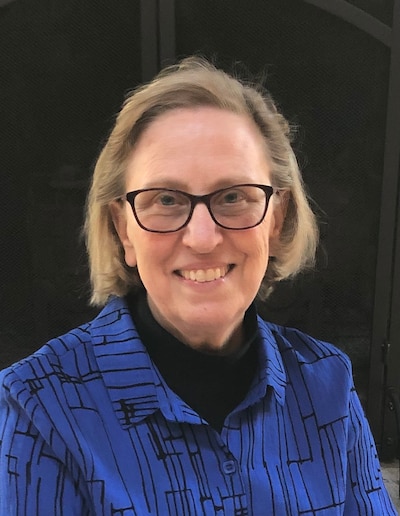
Barbara Gottschalk was a teacher at Flynn Middle School in Michigan’s Warren Consolidated Schools district. As events unfolded that morning, school leaders told teachers to turn off their TVs and keep teaching.
The message was to continue on and not let the students know. At the end of the school day, the principal came on the intercom to announce after-school activities had been canceled. One of my students said, “I wonder why they’re canceling everything.” That’s how protected we’d managed to keep our students. Our principal wanted the students to learn about this from their family members. To this day, I admire how my principal handled this.
Gottschalk is retired and lives in North Carolina.
Gloria Turner, a teacher at Southside Middle School in Florence, South Carolina, remembers the principal coming over the loudspeaker to say that we could not watch the news on TV or the computer.
We turned on the radio instead. I spent the day calming the fears of young teenagers while trying to control my own. All these years later, the unity of our nation is what comes to mind. We had prayer services in the park, and people from all walks of life attended. This is unusual in our town. We held hands and prayed and hugged. American flags were everywhere.
Turner teaches media arts and theatre in Florence, South Carolina.
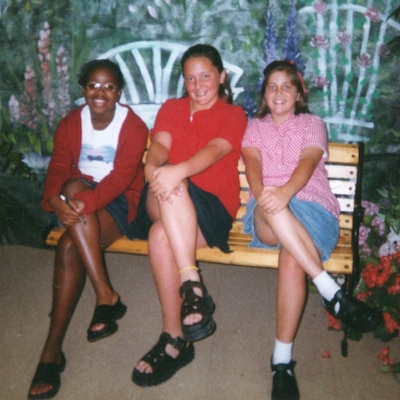
Alyson Starks was in her fifth grade math class at Mt. Juliet Elementary School in Mt. Juliet, Tennessee, when the science teacher, Ms. Jeffries, rushed into the room without knocking.
Ms. Jeffries told Mrs. Hahn something behind the piece of paper as if to tell her a secret. Mrs. Hahn rolled in the TV — those big ones, strapped to a rolling cart with the VHS that never worked — and turned on the news. Later that day, I remember getting off the bus and my parents being home. They were never home when my brother and I got home from school. The TV was on, and I’ll remember my mom’s face as she turned to notice us walk in for the rest of my life.
Starks is a senior graphic designer in Nashville.
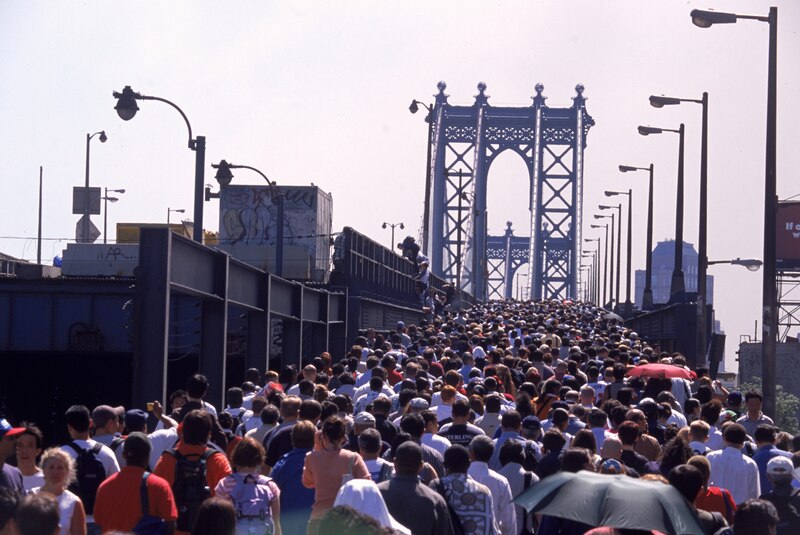
Suzanne Werner was an educator at P.S. 124, which backs up to the Manhattan Bridge. That morning she was asked to cover for a fifth grade teacher whose husband worked at the World Trade Center.
At first, there was a steady stream of sirens, then silence and a steady stream of people covered in ash walking [toward Brooklyn]. By noon most of the children had been picked up, and the teachers were sent home. I stayed with a small group and the principal till 4 or 4:30 p.m., when the last child was collected. By then, the F train was running, and I was able to get back home to Brooklyn. The train was packed and completely silent.
It was so hard to get back to teaching that fall. There were so many distractions. Chinatown was impacted in so many ways. Businesses closed. There was no phone service for many, many months. The stench of the cloud hung over the neighborhood. The number of boxes of letters and boxes of teddy bears from school kids all over the country was overwhelming.
Werner is retired and lives in New York City.
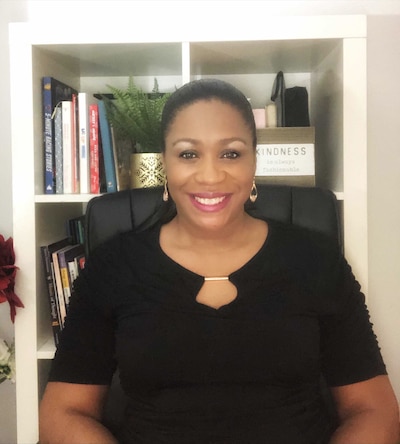
Latasha Fields-Frisco, who on 9/11 was the dean of students at Bronx School for Law, Government & Justice. Her own daughter had just started kindergarten.
It was a regular morning that ended with a bomb threat to our school. We evacuated and ensured all of our students were safe. I lived in Harlem at the time and was unable to drive home. The bridges were closed off. I walked from the Bronx to 122nd Street in Harlem. It seemed like the longest walk ever. I was happy to reach home safely to see my family and just broke down in tears.
Fields-Frisco is an assistant principal in the Bronx.
Sonia Algarin was a school counselor at Health Opportunities High School in the Bronx when the NYPD ordered an evacuation of the school. The city had shut down mass transit temporarily.
How could we dismiss students who now had to walk home during a crisis situation? When would their parents get home if they had to walk from their jobs? Was it safer to keep them at the school? Our school was across the street from a highway, the Major Deegan. The police said we needed to seek shelter at Hostos Community College three blocks away. We had to walk all 500 students through the busy streets. Some were scared there could be another bombing or another airplane crashing into Yankee Stadium 10 blocks away.
Algarin is a school counselor in the Bronx.
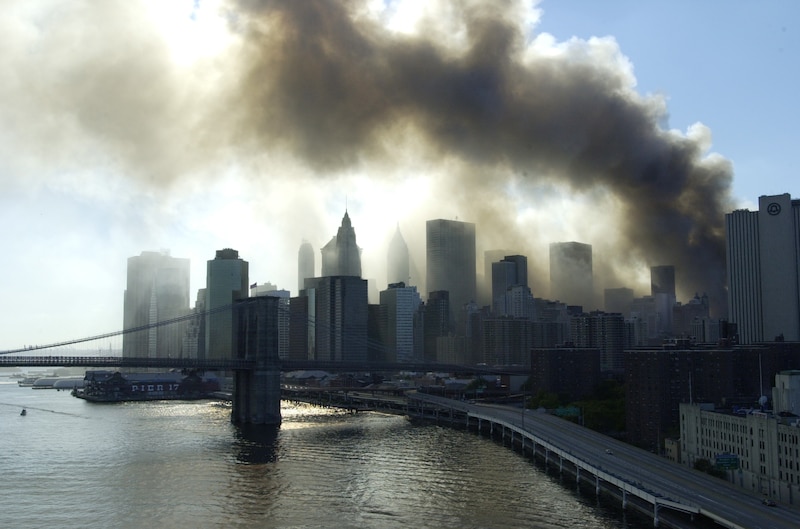
Sunny Asra, a fifth grader at P.S. 220 Edward Mandel School in Queens, thinks about the repercussions of 9/11 for America’s South Asian community.
[On Sept. 13], schools had a two-hour delayed opening. Still having not processed the events, it started to hit us when the kids met each other and our parents hugged one another, and we kind of did the same. In the following weeks, major hate was thrown at the South Asian community due to a lack of knowledge about religion and race. Being that I had a turban, I was even more fearful. Many innocent South Asians were killed, stabbed, and beaten.
Asra is an operations manager for the New York City Department of Education. He lives on Long Island.
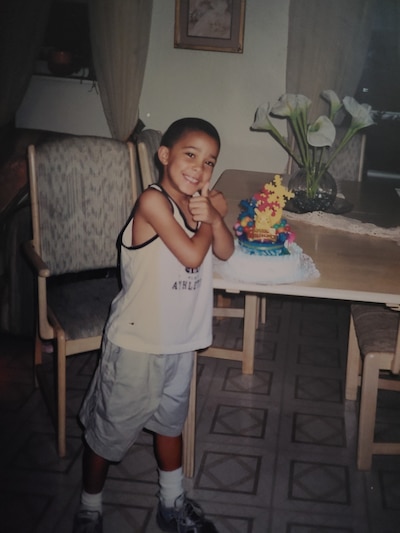
Elvis Santana, a student at P.S. 66 in the Bronx, remembers listening to the radio that morning from under his desk at school. Many of his classmates wondered aloud if their parents were OK and tried to call them.
It was and still is the most devastating storyline of my life. One moment you’re in class learning, and the next, you’re thinking about death, violence, religion, war, and safety all at once. As a Bronx native, by the age of 8, you have already previewed violence and discrimination. The incident of 9/11 broadened that violence and triggered something we weren’t prepared to deal with. To anyone born after 2001, it was a testament to how America handled hatred and violence. In the end, we failed in achieving our objective, and today we see that in places like Afghanistan.
Santana is an education outreach director in the Bronx.
Dale Chu, a third grade teacher in East Palo Alto, California, heard about the terror attack from a local Spanish-language radio station on his drive to work. He had no idea of the scale of the disaster until he walked into the teachers lounge and saw the images on TV.
For the most part, we decided not to address it with our students at the time because of their age and because the feelings were all so visceral. I also vividly remember my brother in Los Angeles calling me that morning, and me stepping out of my classroom to take it. He told me that America was now at war.
9/11 is one of those rare life-defining moments. I can’t believe it’s been 20 years. The recent image of the Afghan boy falling from the U.S. Air Force jet over Kabul brought back for me — in stark relief — this picture of a falling man from the World Trade Center. Most of all, I remember how I felt in the following weeks. The sense of national pride and unity, like when George W. Bush threw out the first pitch at the World Series game in New York City. Given today’s raging culture wars and swirling currents of polarization, we could use a little bit of that now.
Chu is an education consultant in Parker, Colorado.


